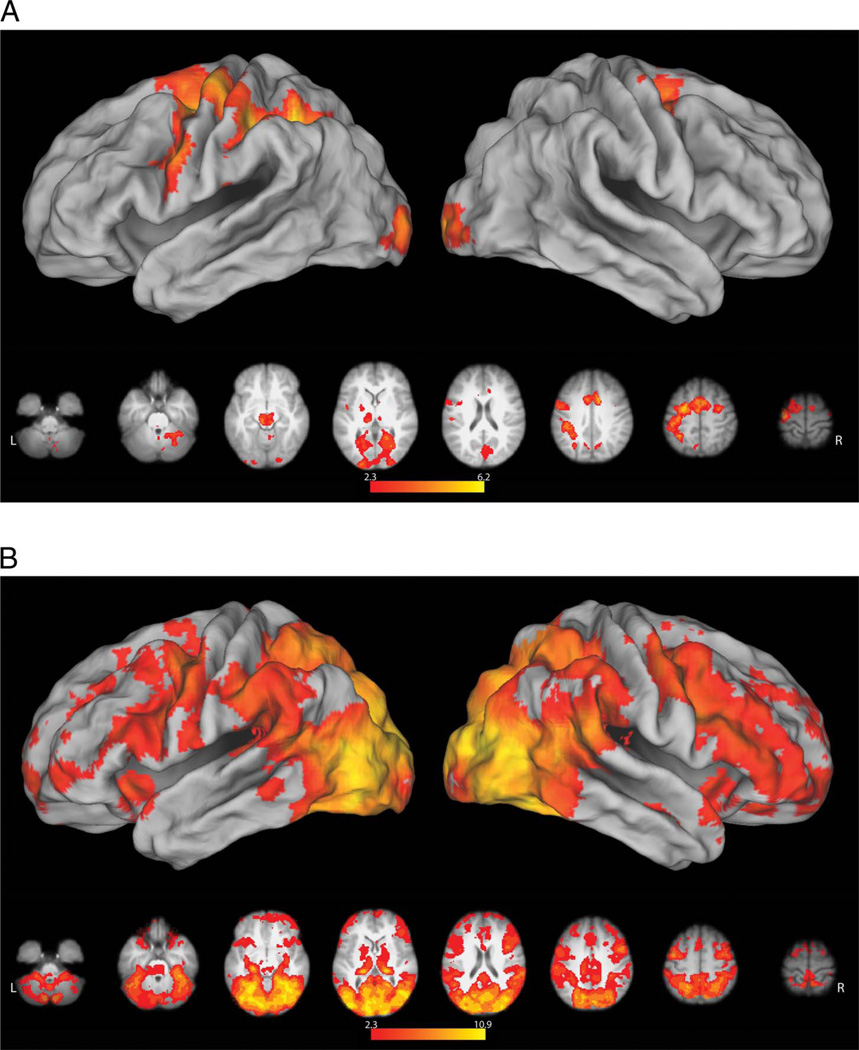Figure 4.
Planning and execution phase responses in the RT. (A) Similar to the MT, no differences were detected between reach and grasp conditions, during the premovement phase. However, relative to resting baseline, both conditions were associated with left-lateralized increases in activity within and along the intraparietal sulcus (including aIPS), extending rostrally across the postcentral and precentral gyri. In the left hemisphere, activity ran the entire length of the precentral sulcus between dPMC and vPMC. In the right hemisphere, only dPMC showed a significant increase in activity. Along the midline, increased activity was detected in the pre-SMA and underlying cingulate cortex. Subcortical increases were present in right cerebellum and bilateral BG. (B) Contrary to what is expected if these regions represent the goal of grasping and in contrast to the MT, no significant differences were detected between activity during grasp versus reach execution (Grasp Go and Reach Go conditions). Pooled together, both execution conditions were associated with widespread increases, relative to pressing an ineffective button followed by fixation of a blank screen (Go > Press conditions). These included bilateral occipital, posterior parietal, premotor, and lateral prefrontal regions that have frequently been reported during observation of manual actions, as well as the BG and cerebellum.

